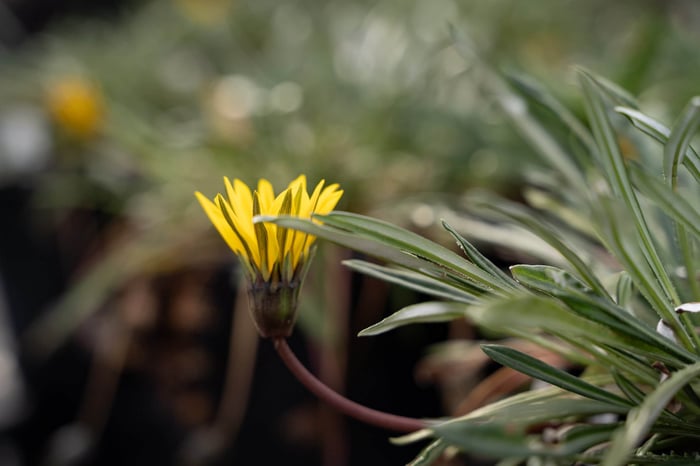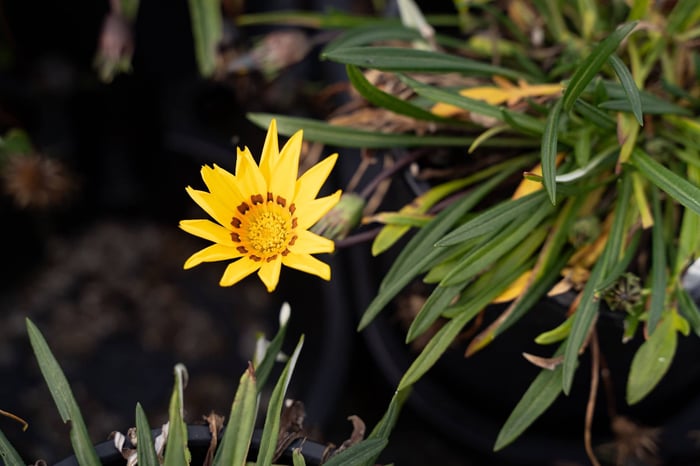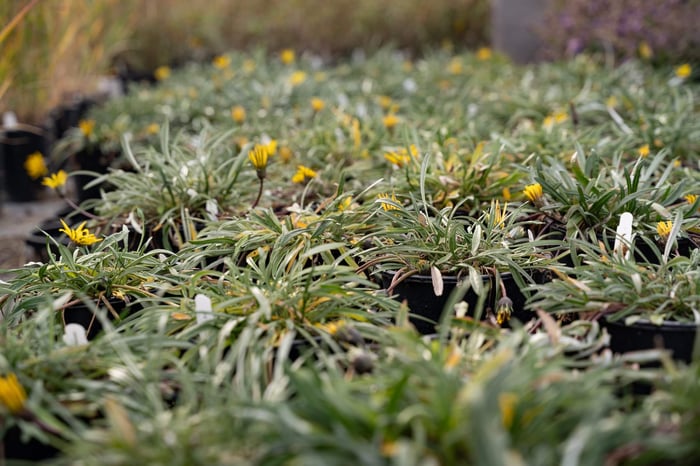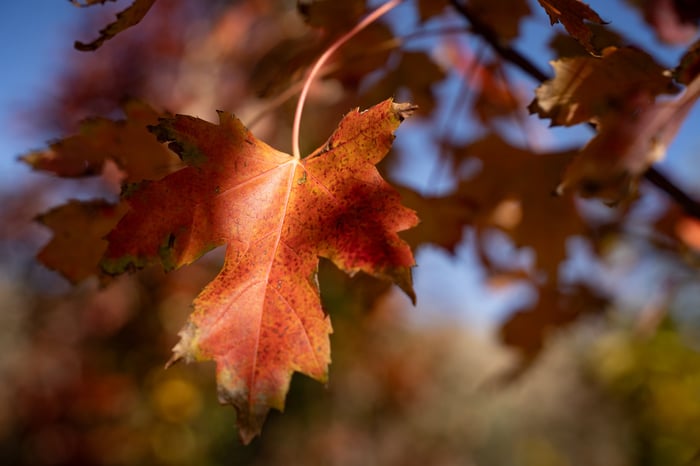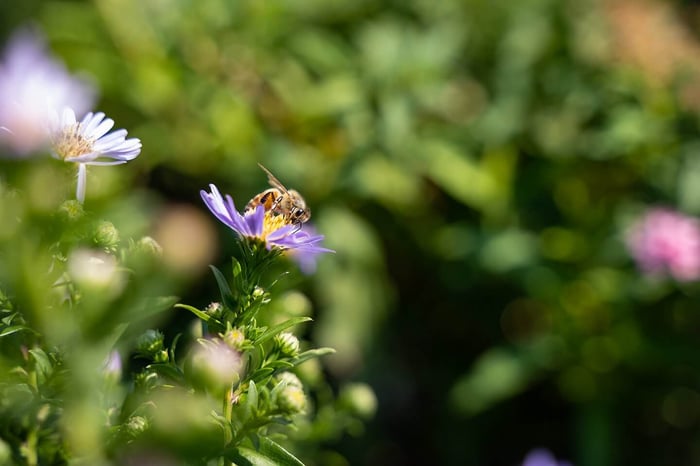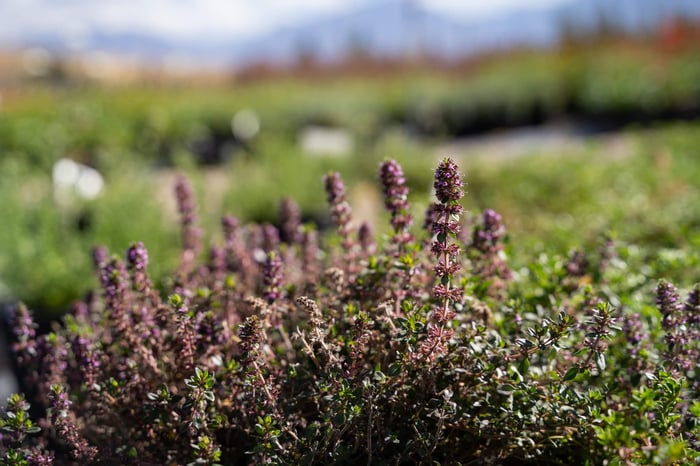Have you ever wished you could have a flower that bloomed from early spring, throughout the summer, and all the way into hard frost? Most flowering plants don’t do that. Typically, every flowering plant has its season of color, whether that’s spring, summer or fall. Once the blooms have died, we simply appreciate them for their foliage and how they complement the plants around them. After all, many plants are beautiful even when they aren’t in bloom. Now and then, however, we’ll find a gem that blooms seemingly forever. Perhaps that’s why certain varieties of African Daisies are called Treasure Flowers, they bring a bright pop to your garden all season long!
When they're happy, Treasure Flowers will reward you with bright, long-lasting daisy-like blooms, low fuss, and a drought-tolerant attitude that suits our tough growing conditions. One of our favorite, and smallest Treasure Flowers is Colorado Gold (Gazania linearis 'P004S' Colorado Gold®, to be precise). It’s a great way to add color in the lowest layer of your garden bed, out on the edge where the soil tends to get dry. This little African daisy is ideal for sunny borders, rock gardens, dry slopes and containers all across Utah, Idaho, Wyoming and Colorado.
Why Gazania works here
The truth is, not all Gazania does work here. The Intermountain West throws a lot at plants: alkaline soils, low humidity, high summer UV, strong winds and a short growing season. In our climate, many treasure flowers are annuals, but Colorado Gold is a wonderful exception. Hardy to zone 4, Colorado Gold® tolerates poor soils and blazing sun, resists summer heat, and recovers quickly after dry spells. It’s not a pampered bedding plant—it prefers leaner soils and moderate watering, making it a natural fit for water-wise landscapes.
Site selection & sun requirements
Sun: Full sun is ideal for the longest bloom and most compact form. In higher, cooler mountain elevations keep them in areas that receive more consistent sunlight to help the flowers stay open later in the day. In lower, hotter elevations, some afternoon shade may help, but too much shade will signal to the flowers that evening has arrived and they will begin to close their flowers early.
Soil: Plant in very well-draining soil. Gazania dislikes sitting in wet clay over winter. In valley clay, amend planting areas or use raised beds or rocky mixes.
Microclimates: Use south- or west-facing banks, rock walls, or gravel mulches that reflect heat and light—Gazanias love that extra warmth and it helps them bloom earlier and longer. That said, this IS Utah. Whenever we see a plant that asks for full sun, we recommend some protection from late afternoon heat during the hottest weeks of the year.
Soil and planting tips from the nursery
Alkaline soils: Treasure Flowers tolerate higher pH, but if you see pale leaves from iron deficiency, treat them with chelated iron or foliar iron in spring. Avoid over-correcting pH unless you have a soil test showing a major deficiency.
Improving heavy clay: If your soil is extremely heavy with clay you may consider amending it with 40% coarse grit or pea gravel, 20% compost and 40% native soil. This creates a fast-draining matrix that roots like. For small beds, build a 12" raised bed with a similar mix. Because African Daisies are smaller plants with roots that only travel about 18 inches deep, improving the soil where they’re planted will help. We don’t suggest trying to amend soils for trees and larger shrubs because their roots will travel beyond the area you amend. Instead, we suggest that you plant trees and shrubs that can handle the soil you already have.
Rocky/sandy mountain soils: Add 2–3 inches of compost at planting to help seedlings get established and retain a little moisture without making the soil heavy.
Watering, irrigation & drought strategy
Gazania is drought-tolerant once established. The trick is to irrigate Treasure Flowers deeply and infrequently to encourage strong roots. For new transplants, water twice a week for the first 3 to 4 weeks (adjusting for heat), then taper back. For established beds, water every 10 to 14 days in summer depending on heat and soil. Use drip irrigation or soaker lines to target your water directly to your plants. Avoid frequent shallow sprays which produce weak, shallow roots.
Fertilizer and upkeep
Use a low-to-moderate fertility plan. Too much nitrogen causes floppy growth and fewer flowers. A light application of slow-release fertilizer at planting and again mid-season is usually enough.
Deadheading improves appearance, but Gazania will keep reblooming without intensive deadheading. A quick shear in late spring can rejuvenate plants.
Pests and diseases: African Daisies are generally low-maintenance. Watch for slugs in irrigated beds and occasional powdery mildew in shaded, poorly ventilated spots.
Propagation & seasonality
Propagate from seed, divisions or softwood cuttings. In our climate, fall is your best time for planting. Cooler temperatures and autumn rains help roots develop without the stress of summer heat. Plant in early fall (late August–September, depending on elevation) so roots can establish before the temperatures freeze. If you plant in spring, give your transplants a head start indoors 6 to 8 weeks before the last frost.
Winter prep for high-altitude gardens
Utah’s sudden freeze-thaw cycles and winter winds cause more damage than steady cold. Apply a 2–3 inch mulch ring in late fall to help moderate the temperature swings of your soil and protect roots from desiccating winds. (We typically suggest 4 inches of mulch in Utah garden beds to help retain moisture and reduce weeds. If you already have 4 inches of mulch, you won’t need to add two more inches in the fall.) In exposed sites, a temporary wind break or planting near a low wall can help prevent winter desiccation. In very cold sites, even your Colorado Gold may go the way of other Gazania and become an annual. That should only happen in higher elevations with a hardiness rating of 3 or lower. Remember that hardiness zones are a measurement of the AVERAGE cold winter temperatures. If you have a prolonged period of extremely cold temperatures, any number of plants could die. That's why we recommend that you select plants that are If you are growing Colorado Gold —treat accordingly.
Design ideas & refined nursery tips
Contrast: Use Colorado Gold® in front of dark-leaved shrubs or against gray-green juniper foliage for striking, long-season contrast.
Mass plantings: For slopes and erosion control, space 8” to 12" apart to create a carpet of gold that suppresses weeds and reduces irrigation needs.
Container trick: Use a gritty, well-draining potting mix and place containers on light-colored gravel to reflect heat.

